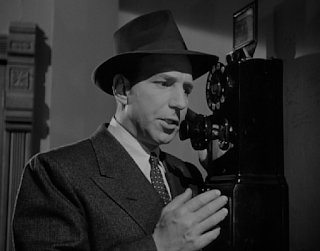The members of the
Classic Movie Blog Association (CMBA) have been asked to recommend five classic
(and some maybe not quite classic) films that are sure to give some comfort to
movie lovers in these difficult times. And there’s nothing like a Michael
Shayne film starring Lloyd Nolan to provide some comfort and distraction when
you—when all of us—are trying to get through the COVID-19 pandemic.
Michael Shayne is an
ordinary guy just trying to make a living as a private investigator; he’s just
not always that good at hanging on to his money or following through on his
engagements. (He has as
much luck getting married as he has keeping his money.) He keeps his ethical code pretty rock solid; he’s been
known to break a rule here and there but only for the greater good. He always
solves his cases, and he has the most fun of anybody doing it.
My top five Lloyd
Nolan–as–Michael Shayne film picks are presented here, in the order that they
were released to movie theaters, which I believe is also the order in which I
saw them. Each film title is also a link that will take you to my original blog
post about the film.
Michael
Shayne, Private Detective mixes murder, mystery, humor—and a
little ketchup. And Michael Shayne isn’t the only one enjoying himself. For
example, one of the characters, Aunt Olivia Brighton, takes it upon herself to
help solve Harry Grange’s murder, which she read about in the newspaper. She
and the Brightons’ butler Ponsby are starting a file on the case.
• Aunt Olivia: [to Detective Shayne] “Here I’ve been, solving other
people’s murders all my life, and now that I have one so close to home, why,
it’s just wonderful. Ponsby and I have started working on the case, but we
haven’t any decent clues, have we Ponsby?”
• Ponsby: “Only the fact that Mr. Grange died in a sea of tomato ketchup.”
The film explains why tomato ketchup
could be relevant at all in a murder.
Sleepers West (1941)
Sleepers
West packs a lot of
information in its short running time of seventy-four minutes. I had to see the
film twice before I was sure how and why Callahan and Caleb Wentworth are connected,
and how Caleb Wentworth is connected to the case for which Helen Carlson would
be testifying. I enjoyed Sleepers West
so much both times that I should see it again, just to make sure I didn’t miss
anything else! You can be sure, however, that Michael Shayne misses nothing.
The film
starts with Michael Shayne (“private investigator to you”) in a clothing shop
looking to buy a suit for his upcoming marriage to Joanne La Marr. Smiley Joe
Bishop is the proprietor. In walks Shayne and Bishop says:
•
Bishop: “Well, well, well.
If it isn’t my old friend, the private dick.”
•
Shayne: “Private
investigator to you.”
• Bishop: “Mike, you’re looking fine. Wonderful.
If you looked any better, you’d have to be twins. Glad to see you, boy. Getting
everything you want?”
•
Shayne: “Well, I was just—”
•
Bishop: “It’s a beautiful
thing, a beautiful thing. You’re sure dressed to kill. [to the store’s
salesperson] Uh, say, isn’t this the suit I told you to put away for another
customer? You can’t sell that suit. [Shayne starts to take off the suit jacket;
to Shayne] Well, all right. So I’ll lose another customer. You’re worth it,
Mike. You’re worth it. Mmm, does it fit? Like a glove.”
•
Shayne: “It should fit like
a suit.”
And did I
mention there’s a murder mystery for Shayne to solve in Dressed to Kill,
too?
The
expression “blue, white and perfect” may be helpful to Shayne’s investigation
into international diamond smuggling, but it doesn’t describe the state of his
romance with his girlfriend Merle Garland. By the end of the film, Merle is
angry with him—although she does have a couple of good reasons. When the case
is closed, Shayne tells Merle that they should get married. She agrees, but
when she opens her closet door to pack, a dead body, with its ankles tied and a
knife in its back, falls out. Shayne is off on his next case, and he leaves
Merle behind: She has fainted and she has been jilted again. Superman, I mean,
George Reeves, has a fairly big role in this one, by the way.
The Man Who Wouldn’t Die (1942)
The Man Who Wouldn’t
Die is a spoof of horror
movies. And all the elements of a horror movie work pretty well in murder
mystery, too:
◊
Dark and stormy night
◊
Thunderstorms with
lightening
◊
A large dark mansion
◊
A ghost with a gun and
glowing eyeballs
◊
A character conducting
electricity experiments in the basement laboratory of the large dark mansion
◊
A sinister contraption in
the basement laboratory that looks like an electric chair
And
someone’s dead body keeps appearing and disappearing. Until Detective Michael
Shayne gets involved, that is.
Bonus: There are actually twelve Michael Shayne films: seven
starring Lloyd Nolan when the films were produced by Twentieth Century Fox, and
five starring Hugh Beaumont when they were produced by Producers Releasing
Corporation (PRC). I haven’t yet seen the last two Nolan versions or any of
the Beaumont versions, but I’m guessing that the Beaumont versions are more
noir in tone. Here’s a handy list:
Twentieth Century Fox films with Lloyd Nolan
◊
Michael Shayne, Private Detective (1940)
◊
Sleepers West (1941)
◊
Dressed to Kill (1941)
◊
Blue, White and Perfect (1942)
◊
The Man Who Wouldn’t Die (1942)
◊
Just Off Broadway (1942)
◊
Time to Kill (1942)
Producers Releasing Corporation (PRC) films with Hugh Beaumont
◊
Murder Is My Business (1946)
◊ Blonde for a Day (1946)
◊ Larceny in Her Heart (1946)
◊
Three on a Ticket (1947)
◊
Too Many Winners (1947)
Enjoy!









